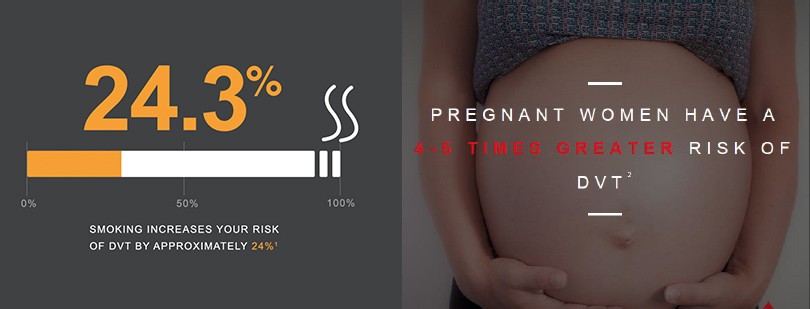DVT Risk Factors and Prevention
Anyone can get deep vein thrombosis (DVT), but certain factors can increase your risk. Find out about the risk factors for DVT and ways to help prevent another blood clot below. And be sure to talk to your doctor about ways to help reduce your chances of DVT
Knowing the risk factors for DVT can help you make healthier choices to reduce your chance of developing a dangerous blood clot. DVT risk factors include:
- A personal or family history of having DVT
- Older age (risk increases after age 60, but DVT can happen at any age)
- Hormone therapy for birth control or to reduce postmenopausal symptoms
- Pregnancy and up to 6 weeks after childbirth
- Injury due to surgery, a broken bone, or other trauma
- Prolonged lack of movement due to hospitalization, illness, injury, paralysis, or lengthy travel
- Recent or ongoing treatment for cancer
- Respiratory or heart failure
- Inflammatory bowel disease, such as ulcerative colitis or Crohn’s disease
- Inherited blood disorders that make your blood thicker or more likely to clot than normal
- Varicose veins
- A central venous catheter
- Obesity (body mass index, or BMI, greater than 30kg/m2)
- Smoking

- See your doctor for regular checkups
- Take all medications as your doctor prescribes
- Quit smoking
- Maintain a healthy weight
- Move around after surgery, injury, or illness
- Move regularly on trips that are 4+ hours















